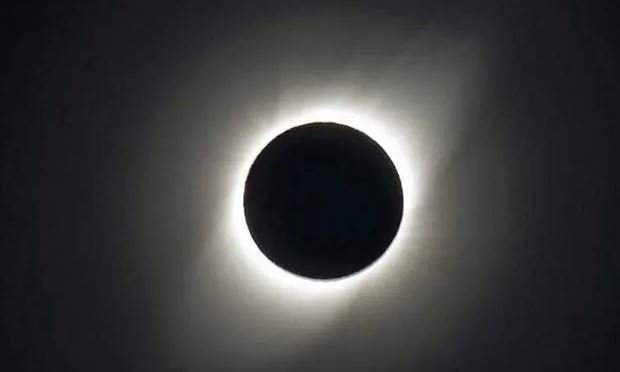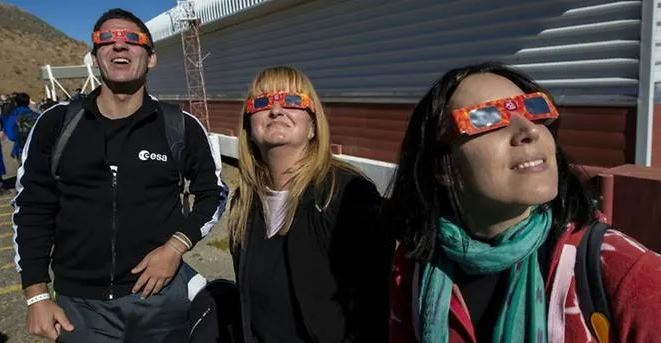A rare total solar eclipse plunged a vast swath of Latin America's southern cone into darkness Tuesday, briefly turning day into night and enthralling huge crowds in much of Chile and Argentina.

Hundreds of thousands of people -- including large crowds congregated in La Higuera in Chile, a country that hosts some of the world's most powerful astronomical telescopes -- looked to the skies captivated by the breathtaking spectacle.
Thousands of people on beaches near the Chilean city of La Serena cheered and clapped at the moment when the disc of the Moon closed over the Sun and blocked it out completely for more than two and a half minutes.
"Oh my God, it's incredible," shouted some, while others chanted "more, more, more."
Many remained silent, enchanted and moved by one of nature's spectacles.

"The truth is that even if one knows what's going on, it is shocking the minute that the shadow of darkness begins to come and that silence begins," said astronomer Sonia Duffau.
Total solar eclipses are rare, but what is even rarer about Tuesday's event is that it occurred directly over an area of the Earth most prepared to witness and study the heavenly bodies.
Chile's Coquimbo region near the Atacama desert -- festooned with some of the planet's most powerful telescopes -- was situated directly on the eclipse's 100-mile-wide "path of totality."
"Very seldom has it happened that the whole of an eclipse is seen over an observatory, the last time this happened was in '91," said Matias Jones, an astronomer at the landmark La Silla Observatory operated by the European Southern Observatory.
"I don't believe there's a better place in the world to see an eclipse than La Silla, because it is very dry, so it is almost certain that the sun will be visible," said Australian tourist Betsy Clark.
Clark and her family were among thousands who flocked to the craggy peaks around the observatory on Tuesday.
"It was an experience to last several lifetimes," said Chilean tourist Rene Serey.
An estimated 300,000 tourists had flocked to the region where dryness, crystal-clear air and little light pollution have created a stargazers' paradise.
Solar eclipses happen when the Sun, the Moon and Earth line up, allowing the Moon to cast its shadow on Earth.
Both Chile and Argentina were situated under the narrow, 6,000-mile long band of Earth that experienced the eclipse.
The eclipse began at 13:01 (17:01 GMT) in the Pacific Ocean, and a 95 mile (150 kilometer)-wide band of total darkness reached Chile's coast at 4:38 pm (20:38 GMT), before crossing into southeastern Argentina and into the wastes of the South Atlantic. (AFP)
-
Articles by AFP









![[Today’s K-pop] BTS pop-up event to come to Seoul](http://res.heraldm.com/phpwas/restmb_idxmake.php?idx=644&simg=/content/image/2024/04/17/20240417050734_0.jpg&u=)
![[Graphic News] More Koreans say they plan long-distance trips this year](http://res.heraldm.com/phpwas/restmb_idxmake.php?idx=644&simg=/content/image/2024/04/17/20240417050828_0.gif&u=)
![[KH Explains] Hyundai's full hybrid edge to pay off amid slow transition to pure EVs](http://res.heraldm.com/phpwas/restmb_idxmake.php?idx=644&simg=/content/image/2024/04/18/20240418050645_0.jpg&u=20240419100350)





![[KH Explains] Hyundai's full hybrid edge to pay off amid slow transition to pure EVs](http://res.heraldm.com/phpwas/restmb_idxmake.php?idx=652&simg=/content/image/2024/04/18/20240418050645_0.jpg&u=20240419100350)

